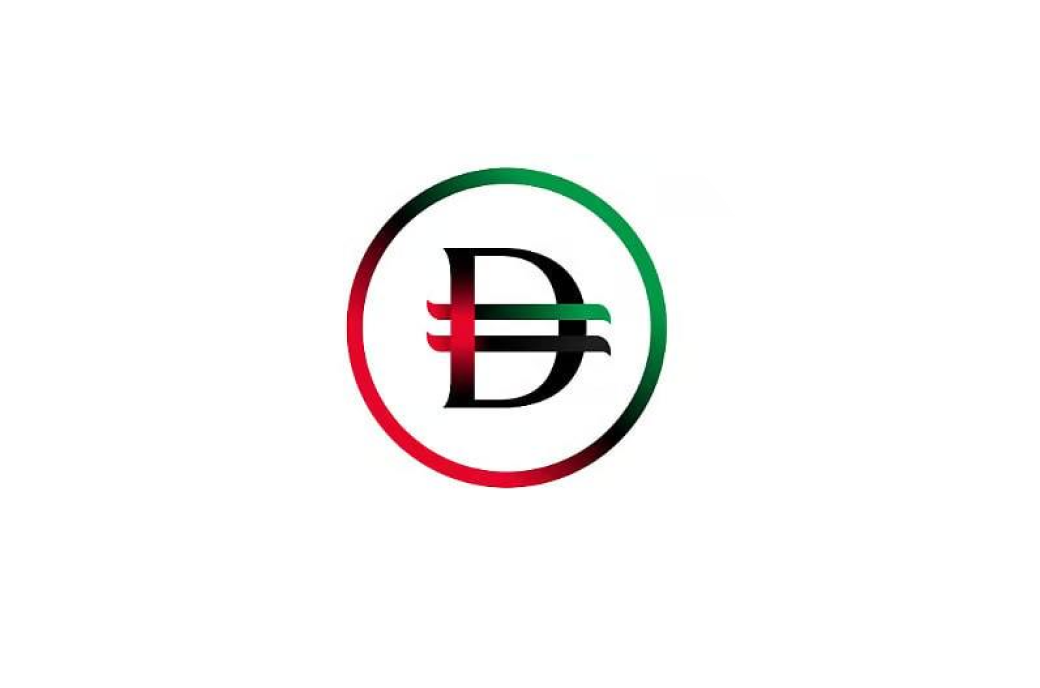The UAE Central Bank has introduced a new symbol for the dirham, combining the letter “D” with two parallel horizontal lines. A separate symbol has been created for the upcoming digital dirham (set for launch at the end of 2025): a circle in the colors of the national flag. According to the Central Bank, the new currency symbol is designed to raise the dirham’s profile in global markets and facilitate transactions in international agreements. Over the coming months, this symbol will be integrated into payment systems, banking documents, and accounting reports, reflecting the UAE’s growing prominence in the global financial sector.
The digital dirham is expected to operate on blockchain and smart contracts, with its own ecosystem and e-wallet. The Central Bank plans to support over 500 million transactions annually through this new platform upon launch, aiming to reduce operational costs by 10–12%. The integration of smart contracts in the financial sector will enable real-time transactions and optimize fund control. Analysts predict that by 2026, the digital dirham could account for up to 15% of all retail cashless payments, and integration with major crypto exchanges (Binance, Bybit) will make conversion and cross-border transfers more efficient.
According to a report from Emaar Properties, total real estate transaction volume in Dubai reached AED 268 billion in Q3 2025—a 14% increase over the same period in 2024. The number of registered contracts rose by 11%, driven in part by deals using digital tools (including stablecoins and local payment platforms). Emaar analysts point out that further blockchain infrastructure development will help reduce transaction processing times by 20–25%, and the adoption of the digital dirham will minimize commission costs for large transactions, especially in the premium segment. The acceleration of settlements has already led to increased demand from Asian and European investors who value rapid ownership registration with minimal bureaucratic barriers.
Additionally, the Dubai Land Department reports a steady 7–9% increase in average price per square meter in new developments over the past six months—a trend attributed to increased capital inflows and the technological simplification of real estate deals. Both DAMAC Properties and Nakheel have seen a rise in clients from Hong Kong and Germany, with over 1,500 new contracts signed in August 2025 alone for premium properties in Dubai Marina and Palm Jumeirah. According to Shuaa Capital, if the digital dirham is widely adopted in mortgage and leasing programs, the market could reach record liquidity levels by mid-2026.
In summary, the introduction of the new dirham symbol and the phased rollout of the digital currency reflect the UAE’s strategic goal of becoming a high-tech financial hub. Both public and private sectors are investing heavily in blockchain projects, including transaction registries and smart contracts, which are expected to further drive asset value growth. Financial analysts forecast that by the end of 2025, around 30% of premium real estate deals in Dubai will be executed using a hybrid model—combining both fiat and digital currencies. The Central Bank’s approach, blending national identity with cutting-edge technology, is laying a new foundation for the sustainable growth of the real estate market and reinforcing the region’s economic stability.
The digital dirham is expected to operate on blockchain and smart contracts, with its own ecosystem and e-wallet. The Central Bank plans to support over 500 million transactions annually through this new platform upon launch, aiming to reduce operational costs by 10–12%. The integration of smart contracts in the financial sector will enable real-time transactions and optimize fund control. Analysts predict that by 2026, the digital dirham could account for up to 15% of all retail cashless payments, and integration with major crypto exchanges (Binance, Bybit) will make conversion and cross-border transfers more efficient.
According to a report from Emaar Properties, total real estate transaction volume in Dubai reached AED 268 billion in Q3 2025—a 14% increase over the same period in 2024. The number of registered contracts rose by 11%, driven in part by deals using digital tools (including stablecoins and local payment platforms). Emaar analysts point out that further blockchain infrastructure development will help reduce transaction processing times by 20–25%, and the adoption of the digital dirham will minimize commission costs for large transactions, especially in the premium segment. The acceleration of settlements has already led to increased demand from Asian and European investors who value rapid ownership registration with minimal bureaucratic barriers.
Additionally, the Dubai Land Department reports a steady 7–9% increase in average price per square meter in new developments over the past six months—a trend attributed to increased capital inflows and the technological simplification of real estate deals. Both DAMAC Properties and Nakheel have seen a rise in clients from Hong Kong and Germany, with over 1,500 new contracts signed in August 2025 alone for premium properties in Dubai Marina and Palm Jumeirah. According to Shuaa Capital, if the digital dirham is widely adopted in mortgage and leasing programs, the market could reach record liquidity levels by mid-2026.
In summary, the introduction of the new dirham symbol and the phased rollout of the digital currency reflect the UAE’s strategic goal of becoming a high-tech financial hub. Both public and private sectors are investing heavily in blockchain projects, including transaction registries and smart contracts, which are expected to further drive asset value growth. Financial analysts forecast that by the end of 2025, around 30% of premium real estate deals in Dubai will be executed using a hybrid model—combining both fiat and digital currencies. The Central Bank’s approach, blending national identity with cutting-edge technology, is laying a new foundation for the sustainable growth of the real estate market and reinforcing the region’s economic stability.
